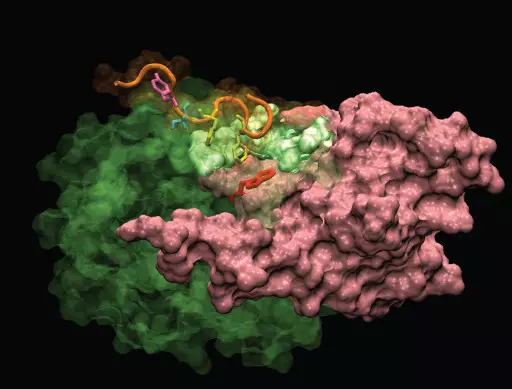
Humans have been able to fight off certain diseases for centuries.
The Black Death took a beating back in the middle ages, cholera was won over by early medical advancements in the 1800s, and since Alexander Fleming discovered penicillin, we've been doing alright.
But now, as the ice caps melt, soils that have been previously frozen are melting and releasing ancient viruses and bacteria, reports the BBC.
In August 2016, a 12-year-old boy and 20 others died in Siberia from anthrax. One theory is that a reindeer with the disease died there over 75 years ago, and the heatwave of 2016 saw the soils melt.
The melting ice reportedly exposed the reindeer corpse which released the deadly anthrax into the nearby water and soil. It then moved into the food supply., other reindeer became infected, and this led to a number of human cases.

Siberia. Credit: PA
Advert
Each year, more and more of the permafrost will melt, with older layers being exposed (usually about 50cm melts each summer). The old permafrost is reportedly the perfect place for bacteria to remain alive for long periods of time.
Jean-Michel Claverie is an evolutionary biologist at Aix-Marseille University, France, and said: "Permafrost is a very good preserver of microbes and viruses, because it is cold, there is no oxygen, and it is dark.
"Pathogenic viruses that can infect humans or animals might be preserved in old permafrost layers, including some that have caused global epidemics in the past."

Credit: PA
Advert
Experts suggest that smallpox and the bubonic plague could also be buried in Siberia.
A report, by Boris Revich and Marina Podolnaya, read: "As a consequence of permafrost melting, the vectors of deadly infections of the 18th and 19th centuries may come back, especially near the cemeteries where the victims were buried."
This isn't the first time this theory has come to light. In 2007, scientists managed to revive an eight-million-year-old bacterium that had lay dormant in the ice in Antarctica.
Advert
Old Epidemics and Lives Lost
- The Black Death, 1346-1353
- Cholera, 1831: 52,000 died
- Smallpox, 1800-1900: 400,000 per year
It is feared that medical experts, already battling against the weakening power of antibiotics, may have to work even harder to tackle these diseases.
However, experts have recently had a huge breakthrough in the HIV field.
Advert
A new study has claimed that scientists have cured HIV in animals using gene-editing.
They found that they could completely remove HIV DNA from human cells, which had been implanted in mice, stopping any further infections and proving that HIV replications can be stopped.
Featured Image Credit: PA